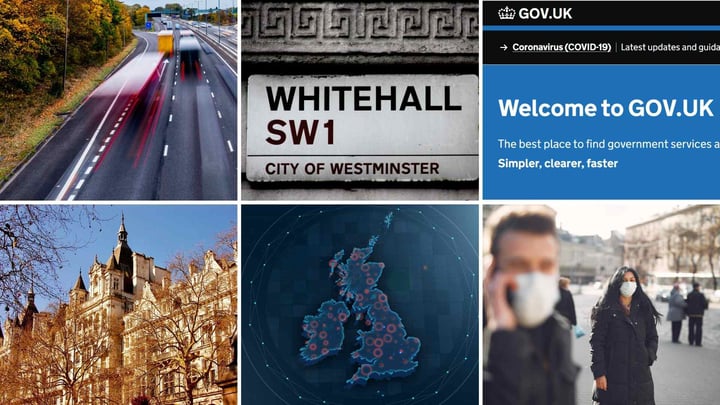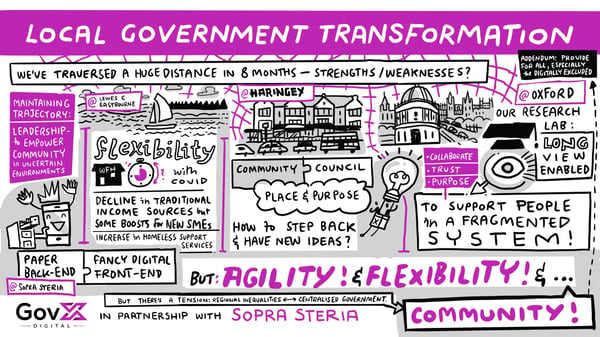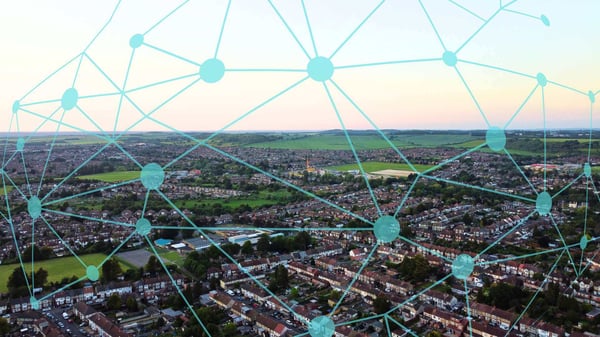Optimising digital transformation in the public sector

The pandemic triggered a huge acceleration of digital transformation in public services in order to continue to support citizens. At the Government Transformation Show in November 2021, we brought together a group of public sector leaders for the panel discussion 'Government Digital Transformation', supported by CloudSource.
They explained how their organisations managed the process, where their biggest successes were, and how they plan to build on those advances. In this report, we’re sharing their key advice for other organisations looking to digitalise their futures.
Chris Howes - Group CDIO, Department for Environment, Food and Rural Affairs
We were one of the departments most impacted by the exit from the European Union. In fairly short order, we had to deliver six new digital platforms to replace services that were previously provided through the EU, covering things like imports and exports of food, animal products and veterinary medicines. 
It was a transformative opportunity to work across policy teams, digital teams, delivery teams, arms-length delivery bodies, end users and major commercial suppliers to get everybody in a room and design end-to-end.
Digital transformation can’t exist in a bubble being delivered by technologists or developers. It has to be very much part of an end-to-end project and be thought of as a business transformation that happens to be enabled by digital.
Worry less about reporting lines to the centres of profession and think more about building hybrid delivery teams
To embed and engage during a project, virtually or otherwise, you need to make sure all the interested parties are part of the decision-making process and have the flexibility to adapt to changing requirements with pace. That doesn't fit with the old mentality of taking a month to get everybody in the room. The new approach for major digital programmes or business transformation programmes is to create blended teams - worry less about reporting lines to the centres of profession and think more about building hybrid delivery teams.
Karina Singh - Director of Transformation, HM Land Registry
The biggest learning point from our transformation projects is how we talk to our users and customers, and how we then make sure we’re delivering the things that they need to to make their businesses more successful, which is what we’re here to do.
We have a greater rhythm of talking to our customers and have put in place a live way of doing our roadmaps. We're introducing a new API system for our customers and intermediaries, so that instead of us deciding the order in which we bring features and services live, we’re doing that with our customers. They can see our roadmap live, and then they vote on the things that they want to see. We've seen strong engagement with that, and it's something we're going to mainstream for new customer-facing products.
We're introducing a new API system for our customers and intermediaries, so that instead of us deciding the order in which we bring features and services live, we’re doing that with our customers. They can see our roadmap live, and then they vote on the things that they want to see. We've seen strong engagement with that, and it's something we're going to mainstream for new customer-facing products.
In the ways we work as an organisation, I'm a huge fan of multidisciplinary teams, because it delivers so many varied benefits. It enables decision making, because by having all the people in the room at the same time, you can take decisions at speed and examine a problem from various angles. It also generates effective skills transfers, because you end up with people in operations, for example, who better understand some of the technology constraints and ways of thinking. Similarly, with policy and legal teams, if everybody is in the room, they then start understanding each other's points of view, delivering a huge organisational benefit.
Mark Williams - Chief Executive Officer, CloudSource
We're seeing two main themes in government digital transformation. Firstly, organisations have had to make tactical steps towards digital transformation - there was no choice, they had to deliver these things for employees to be able to deliver business continuity, and support and deliver public operations.
Those tactical steps did two things - they introduced new tools and systems, but also really expedited the development of new digital skills, use of data, and people's learning, which really drove things forward.  From the perspective of the citizens using public services, there are new expectations about how they want to consume them and again government found tactical ways to digitise and made them instantly available,
From the perspective of the citizens using public services, there are new expectations about how they want to consume them and again government found tactical ways to digitise and made them instantly available,
What’s needed now is to pull all those tactical changes together and roll that out in corporate strategy. In terms of mainstreaming those things, we've got working models of how this can work - it can be more polished, it can be more refined, but in terms of the question ‘can we transform these organisations and public services that they offer?’ - we absolutely can, it's been proven again and again.
How many of these services can we work on at one time and how much disruption can an organisation tolerate?
Another key consideration is pace of change - how many of these services can we work on at one time and how much disruption can an organisation tolerate? While the end goal might be that Amazon-level of customer experience in the UK public sector, the pace at which we get there needs to be realistic. That requires realistic digital roadmaps at the start of this journey to understand how much change and disruption we can bring at any one time.
Doug Ward - Deputy Director of Business Systems & Insight, Innovate UK
At Innovate UK, we see the importance of giving yourself the freedom to experiment in the way that organisations did in order to move quickly during the pandemic. We had to take risks and take chances, and if we can carry on that mentality of challenging the status quo around the speed of delivery and know what kind of risk you're going into - whether that's signing up the technical debt, or whatever it is - just keep trying new things, because that's the only way we'll ever get better.
In the frontline, giving out money early on in the pandemic, we needed some of these taskforces to come together, and one of the biggest learnings was if you have all the decision makers in a room on the first day, then meeting every day, sometimes twice a day, you can rapidly get towards the kind of activities that you want to get done.
Putting that into action, we built a chatbot to help deflect the huge volume of calls we were getting and that's now a live service that's maintained and is ne of the main ways that people interact with us. Carrying that momentum forward, it's been valuable to review the boards that we have and how we make decisions. Who's in the room? Are they a decision-making board? Will we actually get to an outcome here or are we using it as a check-in for a product forum to talk about it? It’s important to get that purpose right so that we get the right people, in the right room, in the right time, to go at the pace that we want to be able to deliver.
Explore more live insights like these at the next Government Transformation Show. Find out more below.






